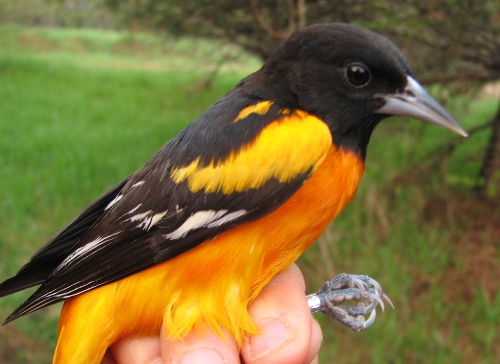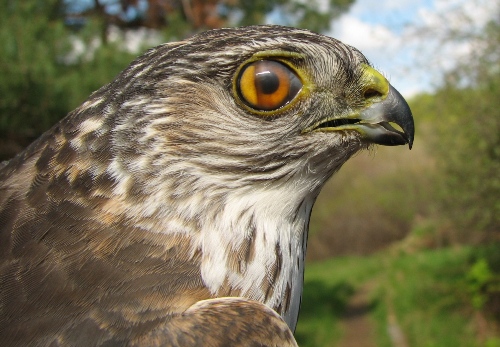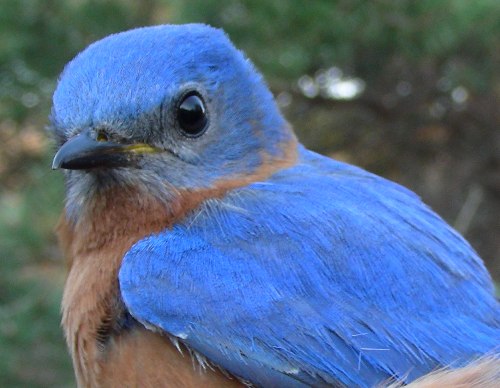|
|
THIS WEEK |
THIS SPRING |
2008 TOTAL |
SITE TOTAL |
|
# birds (and species) banded |
68 (22) |
277 (34) |
277 (34) |
13255 (103) |
|
# birds (and species) repeat |
12 (8) |
59 (14) |
59 (14) |
2285 (60) |
|
# birds (and species) return |
17 (8) |
52 (11) |
52 (11) |
383 (29) |
|
# species observed |
82 |
102 |
103 |
191 |
|
# net hours |
436 |
946.7 |
946.7 |
23328.5 |
|
# birds banded / 100 net hours |
15.6 |
20.0 |
20.0 |
56.8 |
|
|
Note: table does not include nocturnal banding (owls) |
Banders-in-charge: Marie-Anne Hudson, Barbara Frei
Assistants: Alexandre Anctil, Jean Beaudreault, Duncan Brown, Sophie Cauchon, Dominic Chambers, Simon Duval, Nicky Fleming, Emily Gray, Gay Gruner, Jeff Harrison, Lesley Howes, Stacey Jarema, Lance Laviolette, Helen Leroux, Barbara and Don MacDuff, Mike Mayerhofer, Jim Murray, André Pelletier, Kathleen Sary, Rodger Titman, Rae Trenchard
Notes: Spring “officially” arrived this mid-week, with the en-masse arrival of its most colourful heralds: the warblers! We banded more than twice as many species as last week and last year at this time with 13 new species banded, and added a whopping 22 new species to our list of species observed this season, 10 of which were warblers. Add to that, three new species repeated and three new species returned and we’ve got lots of reasons to celebrate spring!
The week began cold and dreary, but then highlights accumulated as southern winds and warmer temperatures beginning on Monday brought a mixture of birds back to MBO for the first time this year, some passing through on migration and others arriving to breed in the area (or so we hope!). Five warbler species were banded this week, including Yellow and Black-and-white, both of which nest locally but also appear at MBO as migrants heading further north. Among the migrants definitely headed further north were Nashville and Yellow-rumped Warblers, as well as White-throated, White-crowned, and Lincoln's Sparrows. Other new arrivals this week included Least Flycatcher, Warbling and Blue-headed Vireos, Baltimore Oriole, and Bobolink - most of which maintain at least a small local population at or near MBO each summer. We look forward to enjoying their colourful company and songs over the next few weeks.
As MBO matures as a station we expect more and more returns of familiar faces (and bands). This week the number of birds returning (i.e., absent for 3 months or more) is greater than those repeated. This is due to several Red-winged Blackbirds, Song Sparrows and Yellow Warblers, that were either hatched or previously bred at MBO. Considering the potential dangers and hardships these birds face during their bi-annual travels, we happily welcome them back for another spring and summer!
This week’s top 10 banded species list shows the influx of new species, with four new entries: White-crowned Sparrow, Common Yellowthroat, Lincoln’s Sparrow, and Yellow Warbler. The top five are similar to last week, with the top three still much more numerous than any of the others. This list barely resembles last year’s list that was devoid of warblers despite an influx of 20 new species that week.
Interestingly, this week’s top 10 observed species list is quite similar to last year’s despite the differences in the top 10 banded. Though Snow Geese pretty much disappeared last week, they were back big time this week, with well over 1000 in the sky at one time. The most notable appearance on the list though is our Cliff Swallows, increasing in number at the same time as last year. Though the first individuals arrived this year on April 21, they are only now appearing in large numberes, with the sky over the weather station teeming with them as they fly around hawking for insects.
|
This week's
top 10 [last week's rank in brackets] |
|
#
individuals banded |
mean #
individuals observed daily |
|
1. White-throated Sparrow (13) [1]
Red-winged Blackbird (13) [2] |
1. Canada Goose (459) [1] |
|
2. Snow Goose (150) [-] |
|
3. Ruby-crowned Kinglet (10) [3] |
3. Red-winged Blackbird (39) [2] |
|
4. American Goldfinch (5) [5] |
4. Cliff Swallow (22) [-] |
5. Tree Swallow (5) [5] |
5. American Crow (21) [3] |
|
6. White-crowned Sparrow (3) [-] |
6. Tree Swallow (15) [6] |
|
7. Common Yellowthroat (2) [-]
Lincoln's Sparrow (2) [-]
Swamp Sparrow (2) [7]
Yellow Warbler (2) [-] |
7. Ring-billed Gull (14) [3] |
|
8. Song Sparrow (12) [7] |
|
9. White-throated Sparrow (11) [5] |
|
10. Black-capped Chickadee (10) [10] |
|
|

A sure sign that summer’s coming: the vibrant oranges of returning Baltimore Orioles. (Photo by Barbara Frei)

This after-second-year male Purple Finch had a well-developed cloacal protuberance, suggesting that it might be not far from its breeding grounds.
(Photo by Barbara Frei)

This second-year male Sharp-shinned Hawk was greeted with whoops of delights when he hit the nets, being the first raptor of the season. Let's hope more follow! Note the partially closed nictitating membrane over the eye.
(Photo by Barbara Frei)
|




